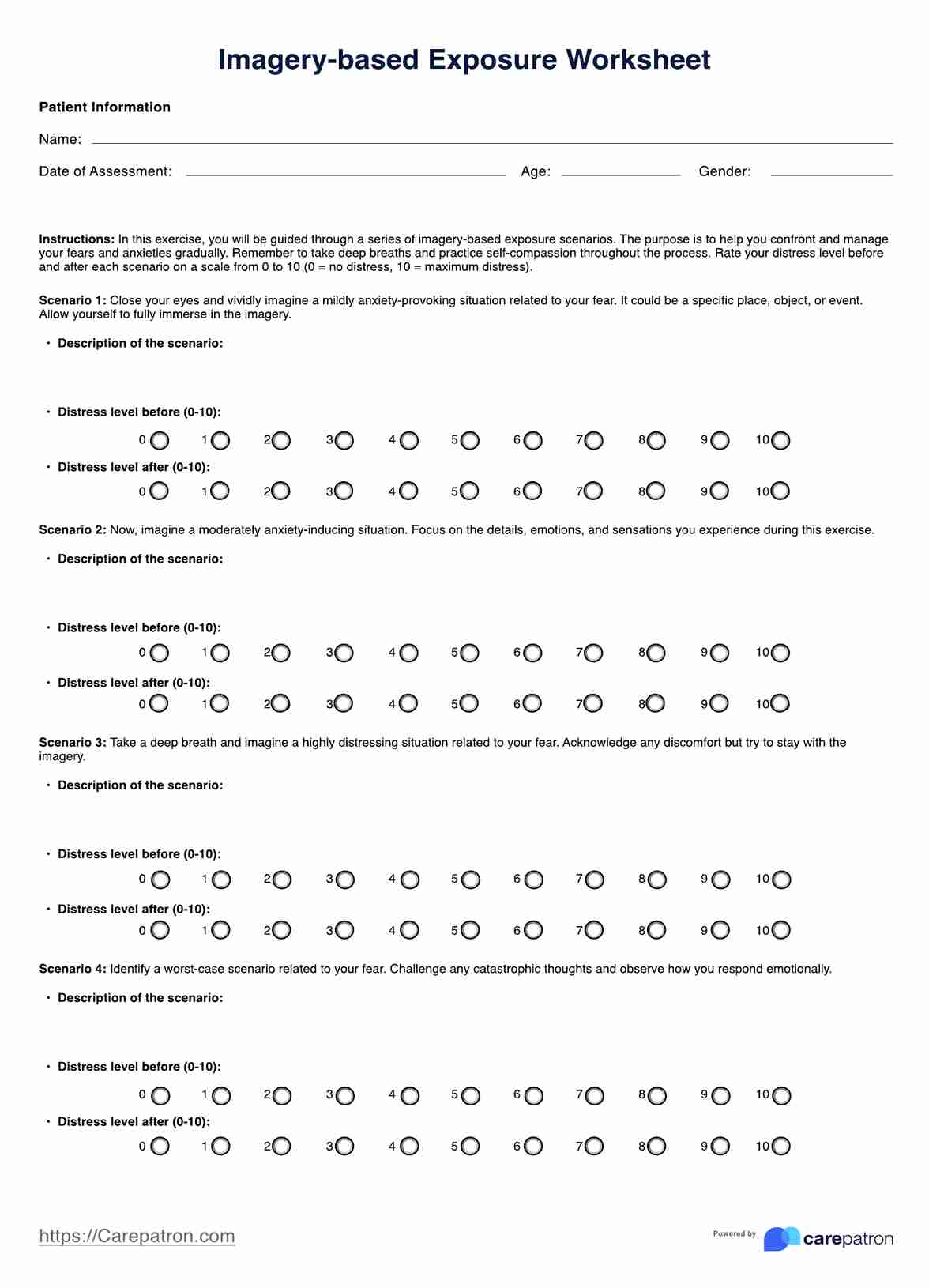Healthcare professionals, such as psychologists, therapists, counselors, and mental health practitioners, can use the worksheet with clients experiencing anxiety disorders, specific phobias, or post-traumatic stress disorder (PTSD).

Imagery-based Exposure Worksheet
Transform your mindset with our powerful Imagery-based Exposure Worksheet. Overcome fears and unlock your potential today. Experience the change!
Imagery-based Exposure Worksheet Template
Commonly asked questions
The worksheet promotes gradual exposure, helping clients confront their fears at a manageable pace. It fosters self-awareness, encouraging clients to explore their emotional responses and thought patterns. Including coping strategies empowers clients to manage anxiety effectively, while positive affirmations reinforce resilience and motivation.
While the specific Imagery-based Exposure Worksheet may not have dedicated research, exposure therapy generally has a substantial evidence base supporting its efficacy in treating anxiety disorders and phobias. Numerous studies have demonstrated the positive outcomes of exposure therapy in reducing anxiety and improving overall well-being for clients.
EHR and practice management software
Get started for free
*No credit card required
Free
$0/usd
Unlimited clients
Telehealth
1GB of storage
Client portal text
Automated billing and online payments











